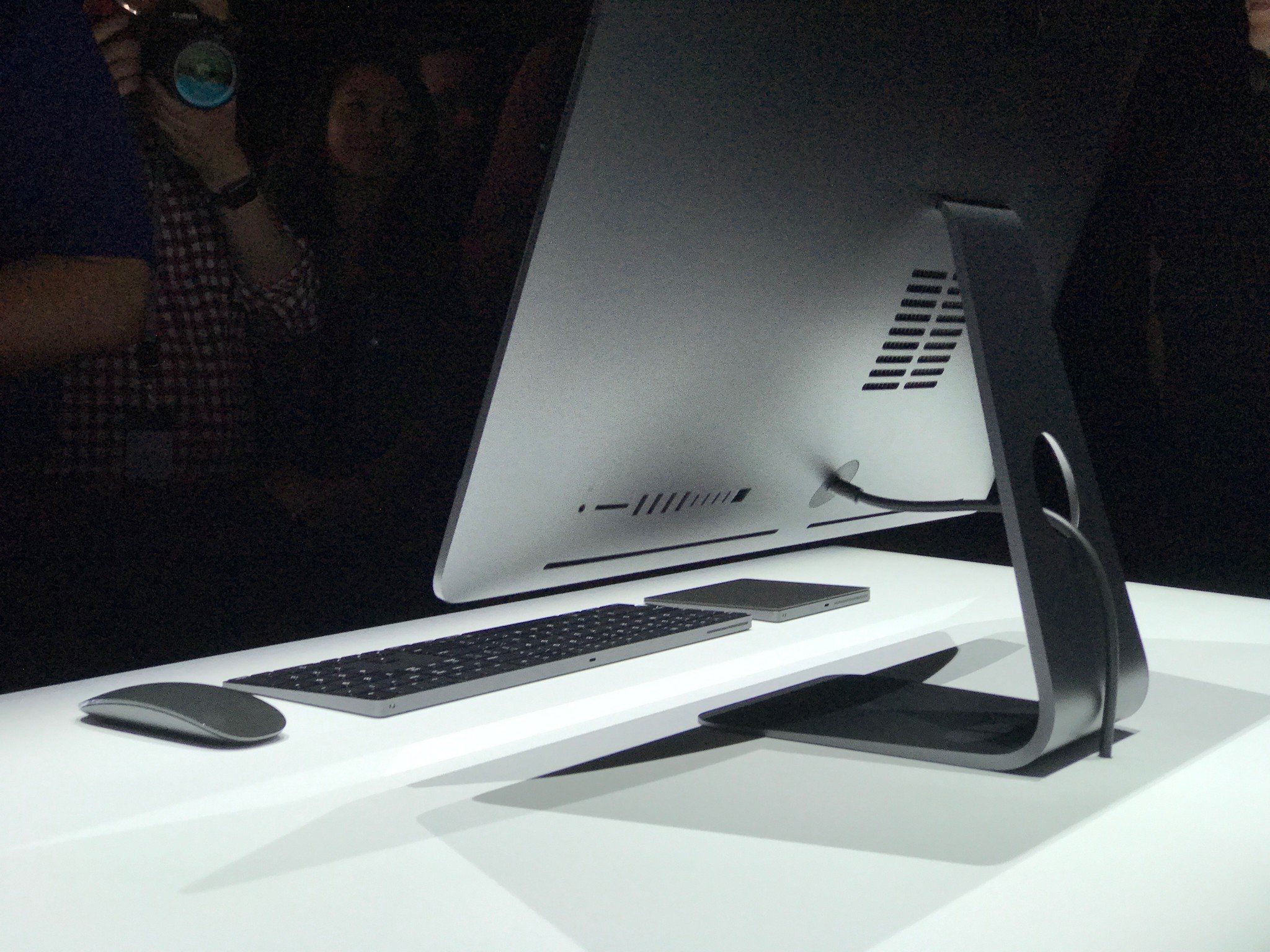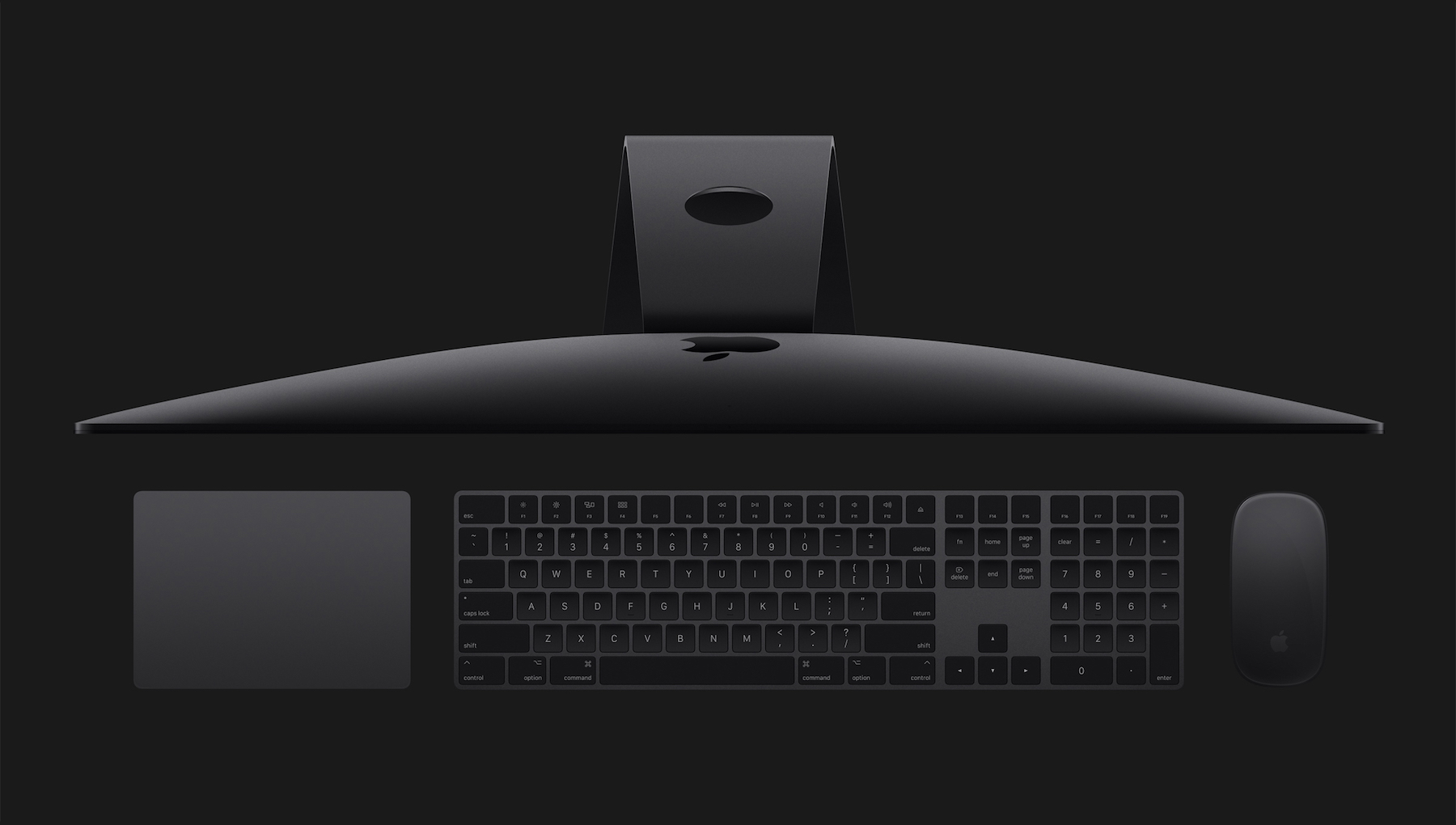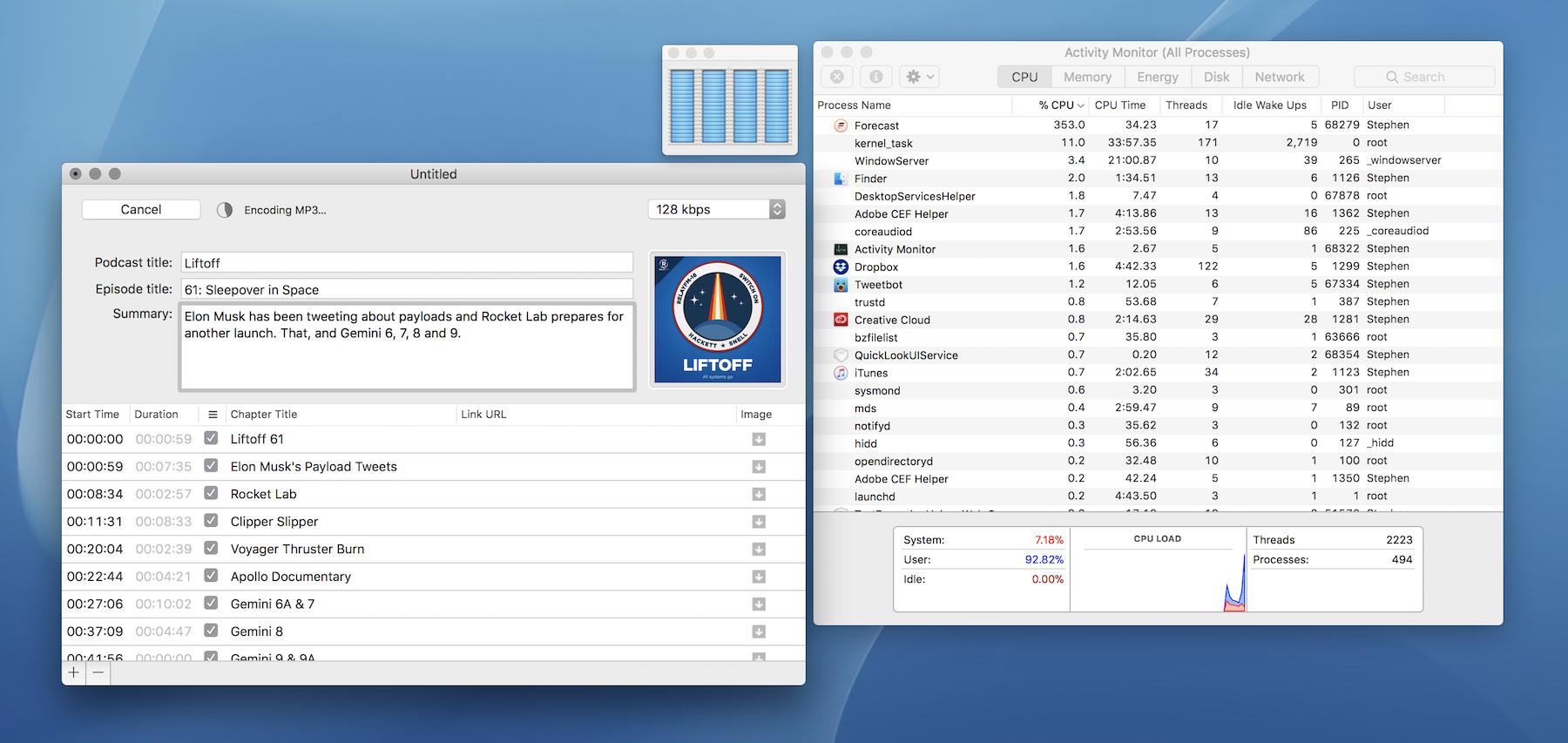Why I'm considering the iMac Pro


My current workstation is a Late 2015 iMac with 5K Retina display. It has a 3.3 GHz Core i5 processor, 32 GB of RAM and an AMD Radeon R9 M935 GPU. When new, this was the mid-range processor and the best GPU option available. It is by far the fastest Mac I've ever owned. At two years old, it feels just as powerful and responsive as it did the day I unboxed it.
If I tune out my overwhelming nostalgia, I think I can say that it's my favorite Mac of the many that have occupied space on my desk over the years. Even under load, it's quiet, and the all-in-one form factor means I can have a whole bunch of equipment plugged into it without creating much in the way of a mess. Everything flows from the ports on the back, keeping things nice and tidy on my desk. I'm sold on the form factor.
I make stuff for a living. While even one of my old PowerBooks is enough computer to blog with, the podcasts and videos I produce follow Parkinson's Law: "Work expands to fill the time available." The same is true for computing. No matter how fast my Mac may be, the applications I use will steal every scrap of power available.
Take something like Forecast, the encoder I use to crush my podcasts down to MP3s: It's a multi-threaded application, which spreads out the encoding workload to as many of my machine's cores as possible. It's much faster, as it harnesses more of the power out of my iMac's processor, but that speed comes at a cost. Here's what Activity Monitor (and its CPU Usage window) look like when putting Forecast through its paces:

Forecast is doing what its supposed to do; running each core on my iMac's i5 as hard as it can to make encoding take as little time as possible. I still have a short wait on longer podcast episodes, but it's much faster than a single-core tool.
Other apps like Final Cut Pro X peg every core on a regular basis. Every time the app needs to render something, CPU usage goes through the roof. Need to de-noise some audio in iZotope? Better go grab a cool drink.
There's not much I can do about this. I could have opted for one of the Core i7 iMac models, but to see a real breakthrough in performance at this level, most users would need to look at a Mac Pro.
Master your iPhone in minutes
iMore offers spot-on advice and guidance from our team of experts, with decades of Apple device experience to lean on. Learn more with iMore!
... Ahhh, right. The "current" Mac Pro is a relic from 2013, and Apple's mentioned-but-not-yet-reveled next-gen Mac Pro isn't here yet.
But there is another.
Promised back in April, and shown off at WWDC 2017, the iMac Pro is Apple's new top-of-the-line Mac. This new, space gray all-in-one is the most power a user can have while using macOS for the foreseeable future*, and it's launching on December 14.
*I assume the new Mac Pro will be even more powerful, but until it ships, the iMac Pro will undoubtedly be the machine of choice for power users. Even once the Mac Pro is on the market, the iMac Pro's all-in-one design and lower (relative) price point will keep it on the radar of many pro users. But all of that is a conversation for a different time.
Even the base model 8-core iMac Pro should handily beat other Macs in multi-threaded tasks. And coupled with its new Radeon Pro Vega GPUs, the iMac Pro is the fastest Mac ever made — full stop.
Apple is delivering this in the same form factor as the existing 27-inch Retina iMac — the very same computer I own, just in a different space grey shade. According to Apple, the computer's redesigned thermal system should be able to more than handle the increased heat generated by the cores and graphics card, and I believe them. (Hopefully that's not just my love of Space Gray hardware talking.)
But who is all of this power for? Starting at $4999, this is not a cheap computer. That and the power of this computer speaks about who it is for. If you edit 4K video, work with a bunch of audio, or pay the rent as a software developer, this machine is a great option. The iMac Pro offers up to 18 cores of Intel Xeon power (though the 18-core option won't be available until 2018); those cores will light a giant fire to power programs like Forecast, Final Cut Pro X, Xcode, and more. If your workload consists of tasks that are multi-threaded, the iMac Pro is absolutely worth considering. It could radically increase your efficiency, speeding up all types of work.
If you're a regular user, getting along just fine on an iMac today, I don't think the extra horsepower is worth the cash. The iMac Pro is for pros; it says so right in the name.
For me, it's a temptation I'm not sure I'll resist. Much as I love my current Retina iMac, I am extremely interested getting one of these beasts. But I won't be pressing that pre-order button on the 14th: I want to see how the dust settles over real-world benchmarking before I fork over any cash.
If the results are what we think they will be, however, the expense is worth it. If the iMac Pro lets me work with more efficiency and less frustration, I'm in. Depending on final prices and benchmarks, I'd consider the 8-core with a mix of more RAM and the more powerful GPU; that said, I'm hoping the 10-core is a nice balance of power and price. Either way, it'll be faster and way more Space Gray-ier than my current rig.
Stephen Hackett is the co-founder of the Relay FM podcast network. He's written about Apple for seven years at 512 Pixels, and has more vintage Macs than family members living in his Memphis, TN home.

